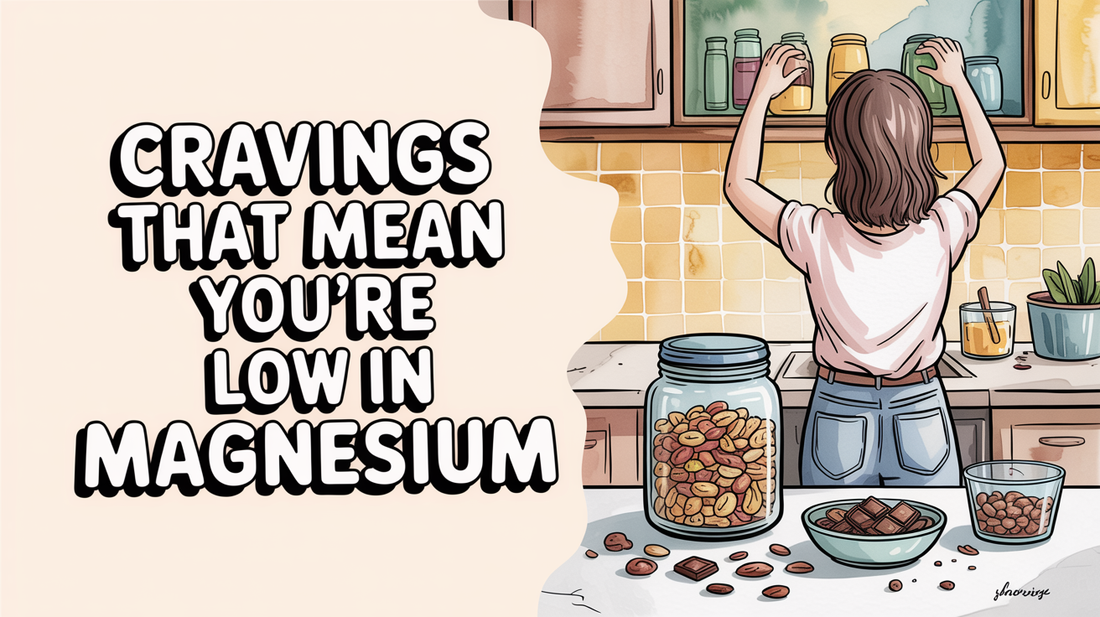What do you crave when low on magnesium?
If you often find yourself craving chocolate, salty snacks, or even certain nuts, it may be a sign of magnesium deficiency. These cravings can be your body’s way of signaling that it needs more of this essential mineral. In this blog post, we’ll explore the connection between magnesium deficiency cravings and how recognizing the signs low magnesium can guide you to healthier choices. Our discussion will be divided into three key sections to help you take actionable steps tonight!
Chocolate, nuts, and salty foods may signal low magnesium levels
Cravings for specific foods can often indicate a lack of magnesium in the body. For instance, many people experience a strong desire for chocolate when their magnesium levels are low, as dark chocolate is a notable source of this mineral. Similarly, salt cravings can arise because magnesium plays a role in regulating sodium balance and electrolyte function.
Nut cravings, especially for almonds and cashews, may also suggest that your body is seeking magnesium-rich foods. Additionally, when magnesium levels dip, cravings for sugar and processed foods can intensify. However, it’s important to note that while these cravings emerge, indulging in processed foods might worsen the deficiency as they typically lack magnesium.
- Craving chocolate? It might be your body asking for magnesium!
- Salt cravings could signal a need for electrolyte balance.
- Nuts like almonds and cashews are great sources of magnesium.
- Sugar cravings may intensify due to magnesium's role in blood sugar regulation.
- Beware of processed food cravings; they often contain little magnesium.
Try It Tonight: Quick Start ✅
- Screen-free + dim lights for 10–15 minutes.
- Gentle stretch or slow breathing (4–7–8).
- Apply Magnesium Spray as directed (e.g., 4–8 sprays on legs/arms/shoulders 10–20 minutes before bed). Patch-test if new to topicals.
Magnesium plays a role in muscle and nerve function
Magnesium is vital for muscle and nerve health. A deficiency can lead to noticeable symptoms that disrupt daily life. For example, magnesium acts as a natural calcium channel blocker, which helps your muscles relax after they contract, potentially preventing cramps. This is particularly relevant for those who experience muscle twitches or spasms, especially in the legs and feet.
Moreover, magnesium supports nerve signal transmission, ensuring that communication between the brain and body remains effective. If you’ve experienced numbness or tingling, it could be linked to insufficient magnesium levels affecting nerve function. With magnesium supporting over 300 enzymatic reactions in the body, its role in energy production and protein synthesis cannot be understated.
- Magnesium helps muscles relax, preventing cramps.
- It ensures effective communication between the brain and body.
- Muscle twitches can be an early sign of magnesium deficiency.
- Numbness and tingling may indicate impaired nerve function.
- Supports critical processes like energy production and protein synthesis.
Why We Recommend a Gentle Helper 🌿
Magnesium Spray is designed for quick absorption and a soothing, non-sticky feel with calming notes. It may support a consistent bedtime ritual.
- Quick-absorbing comfort—no heavy residue.
- Gentle feel designed to minimize tingling/itch.
- Clean-leaning and bedtime-friendly scent.
Eating spinach, almonds, and pumpkin seeds can help meet magnesium needs naturally 🔍
Incorporating whole foods into your diet is an excellent way to enhance your magnesium intake. Leafy greens like spinach, for instance, contain about 157mg of magnesium per cooked cup, making it one of the richest vegetable sources. Similarly, almonds are not only delicious but also offer around 80mg of magnesium per ounce, along with healthy fats and protein.
Don't overlook pumpkin seeds, which are exceptionally high in magnesium with approximately 150mg per ounce. Other good sources include avocados, black beans, and quinoa, which can be easily added to meals. For optimal absorption, it’s beneficial to consume magnesium-rich foods alongside vitamin D while being mindful of excessive calcium or caffeine intake.
- Spinach is among the top vegetable sources of magnesium.
- Almonds are a delicious way to boost your magnesium intake.
- Pumpkin seeds pack a powerful magnesium punch.
- Include avocados, black beans, and quinoa in your meals.
- Pair magnesium-rich foods with vitamin D for better absorption.

